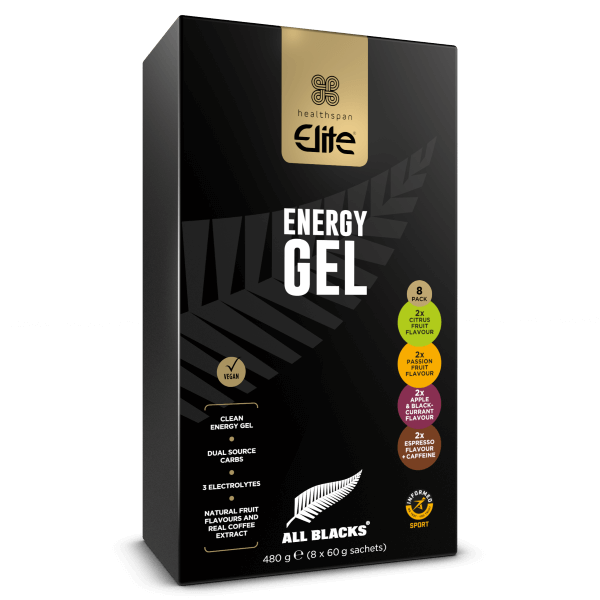Tracy McCartney is a qualified Personal Trainer and Nutritionist and trains clients from beginner to Elite level. She is a writer for national magazines, newspapers and websites and is also a public speaker on nutrition and sport.
If endurance sport is your love and passion, taking time off can seem pointless - why stop doing something you enjoy? But for optimum performance and development, giving your body time to recover is essential. Recovery is defined as a return to normal condition or state of health, mind, or strength.
Proactive recovery is a fundamental part of endurance training to prevent injury and illness and to improve performance. Periods of rest, through active or passive recovery, as well as good nutrition, hydration, and sleep form the foundations of a successful recovery plan. Without adequate recovery between training sessions, your body will find it hard to withstand the physiological, mental, and emotional stress from training. With correct planning of workload and recovery time, however adaptation can enable you to become fitter, stronger, and faster.
Successful endurance training
To reach your endurance goals, you will of course need to plan specific sessions within a set time period. These will differ depending on the different events you may be competing in, or what the overall aim of your training may be. Your training plan will depend on your age, ability, goal, and will also account for time availability, any physical or psychological issues, and past results. Some may find that frequent sessions, up to 3 times a day is necessary to reach their goals, where others may plan in 3 training sessions within a week.
Your training should be planned around a series of building and recovery phases known as periodisation. Each phase will target a specific feature or series of attributes to be developed within a designated period of time. For example, if you were a marathon runner hoping to break 3 hours in your next race, part of your training would include speed work in the form of interval training. As you progress this speed work would be modified to ensure continual progression.
What happens to my body during training?
During exercise the body burns available fuel to move, and your muscle tissue tears in response to the workload. The training time and intensity will influence how severely the muscles are torn and how much fuel is burned. Recovery from exercise should be planned according to these factors in order to adequately replenish fuel stores, ready for the next session, and to repair the muscles sufficiently to avoid injury.
Training also increases capillary density (the number of capillaries that supply nerves to the muscles) by 5-20%, this is known as capillarisation. Capillaries provide working muscles with oxygen rich blood, and remove carbon dioxide. This process is especially beneficial for those who are training for endurance. Increased blood flow allows for more oxygen to be pumped to your working muscles delaying the onset of fatigue and allowing more energy to become available whilst exercising. So what are the body's main sources of fuel?
Carbohydrates
Carbohydrates are the body's preferred energy source. Eating carbohydrates provides energy to the muscles, brain, and nervous system, facilitates the metabolism of fat, and ensures that the protein in muscles is not broken down to supply energy.
When we eat carbohydrates, they are broken down into small sugar molecules in the stomach. These molecules are transported through the digestive system and then converted into glucose by the liver to make a usable form of energy, known as ATP (adenosine triphosphate). Any glucose that is not needed immediately is converted into glycogen and stored for later use.
We only hold around 2000 calories of carbohydrates however, and therefore replenishment needs to take place after training to ensure stores are topped up sufficiently. The general recommendation for carbohydrate intake post exercise is to consume 1.2g/per kg of bodyweight, per hour of exercise for the first four hours (e.g. 85g carbohydrate per hour for a 70kg athlete), and then resume normal carbohydrate intake, based on an individual's identified carbohydrate needs for that day.
Fat
The second available source of fuel is fat. We can store over 50,000 calories of fat in our bodies in the form of triglycerides, within fat (adipose) tissue as well as in the muscle fibres (intramuscular triglycerides). Fat is a poor fuel however, as it requires a lot of oxygen to break down each gram. Some studies show that fat is the primary source of fuel in lower intensity training, whereas glycogen is used during higher intensity training. Over long distances, or prolonged periods of time fat fuels the body once glycogen stores are depleted.
Protein
Protein is used to build, maintain, and repair body tissues, as well as to synthesize important enzymes and hormones. During training, muscles breakdown and protein in the form of amino acids repairs the muscles. Inadequate ingestion of protein, pre and post exercise, can lead to injury and illness and can also lead to a reduction in immunity.
Consuming 20-30g of protein has been shown to maximise muscle protein synthesis in the first few hours of post exercise recovery. Post exercise snacks and meals consisting of all three essential macronutrients is needed for optimum proactive recovery.
How to eat before, during, and after training
How much, what, and when we eat has a huge impact on sports performance. Getting it right, can mean the difference between achieving your goal and not succeeding. Good nutrition and consistency with your diet are just as important as your training regimen for improving results.
The key goals of pre and post exercise nutrition should be: to ensure glycogen stores are topped up before, during, and after exercise; taking on protein to assist with muscle repair and synthesis; and restoring fluid and electrolytes lost in sweat.
Pre-training/competition
Time your pre training or pre-race meal at least 1 ½ hours before starting. Make sure it includes both slow releasing carbs and protein to ensure blood sugar levels remain steady during exercise. Fat is best avoided before exercise as it is hard to digest and can therefore aggravate the stomach, leaving some feeling queasy. Stuck on what to snack on?
Here are a few examples of good pre session combinations: bananas and Greek yoghurt, toasted chicken sandwich, cereal bars, flapjacks, a bowl of cereal and milk, or a fruit smoothie. If you have a big event ahead it's always best to test what works for you, avoiding anything you haven't tried before. Lastly, make sure you are hydrated to thirst without overdoing it, as excessive fluids can cause bloating or a dreaded stitch.
During training/competition
During training or competition you may find your body needs additional carbohydrates to maintain energy levels. Of course this depends on the time and intensity of the session, but feeding your body is essential to make sure your body maximises its recovery time. Quick release carbs contained in gels, sweets, and electrolyte drinks will allow you to continue training while topping up your glycogen stores. As a rule of thumb any exercise that is longer than 90 minutes will require an athlete to take on carbohydrates.

All Blacks Energy Gels
Fast-acting energy gels with delicious natural flavours
- Delivers fast-acting energy
- 25g fast-acting carbs and 3 electrolytes
- Apple & Blackcurrant, Citrus Fruit, Espresso (with Caffeine) and Passion Fruit
Post-training/competition
Post exercise nutrition should be individualised to your needs, based on workload, fuel used, body size, body composition goals, and the period of time before your next session or event. After a tough session or big event you may feel unable to eat straight away: this is very common for those that train for endurance. If this is the case an electrolyte drink will suffice to quickly replenish glycogen levels and lost fluids and salt. As a general rule it is recommended that you try to take on a mix of protein and carbohydrates within 30 mins to 1 hour of finishing your session.
This will kickstart your body's repairing and refuelling process. For the perfect post workout refuel, tuck into a wholesome snack such as a glass of milk and a lean meat sandwich, banana and Greek yoghurt, whey protein made with milk, or a wholemeal bagel with ham, cream cheese, and grapes.
Nutrition is an integral part of an athlete's training and recovery process, and should be carefully planned to ensure long term success. When you're not training, focus your attention to what you are putting in your body and ensuring your body gets sufficient amounts of rest. Most importantly, remember to listen to your body, and respond to when it needs fuel and time to recover.







